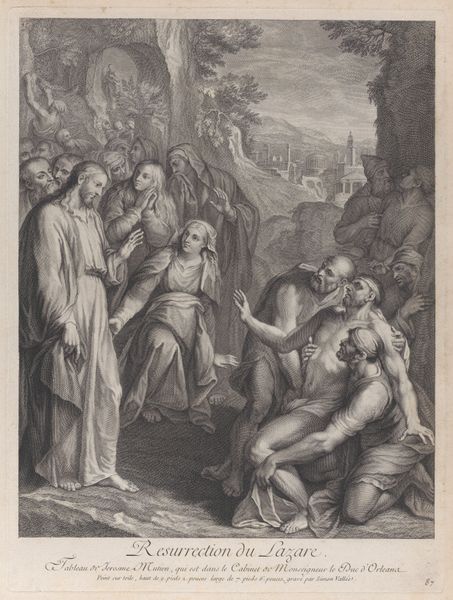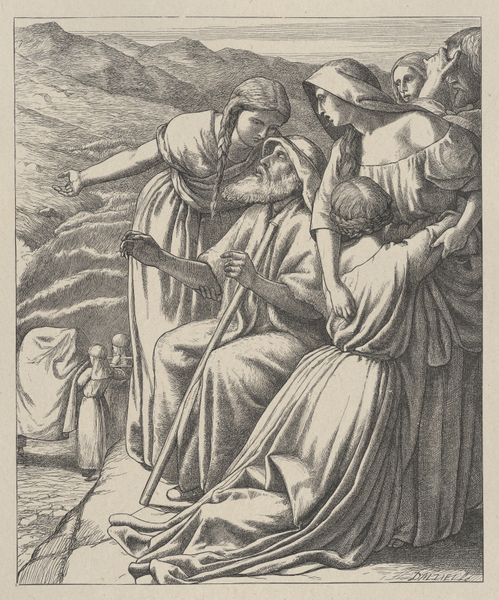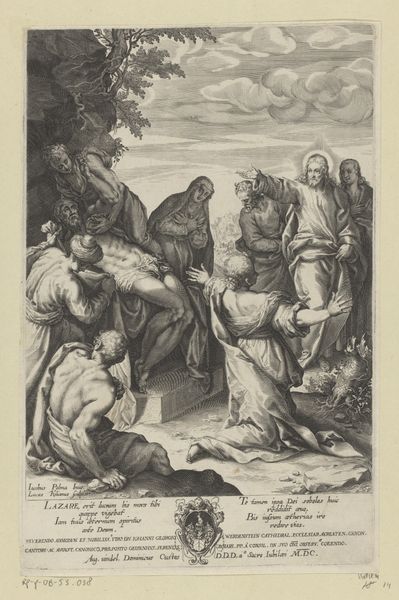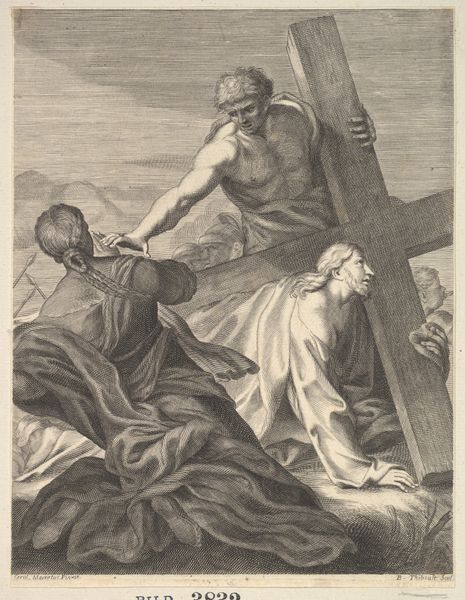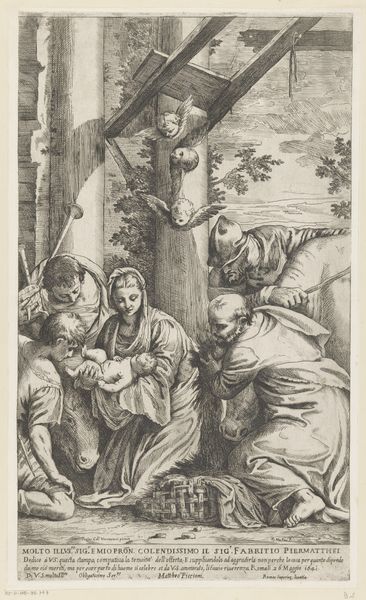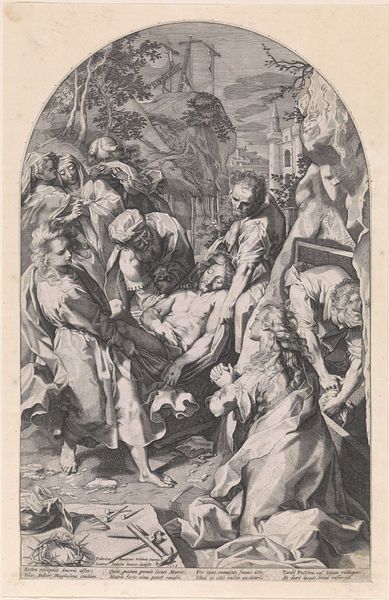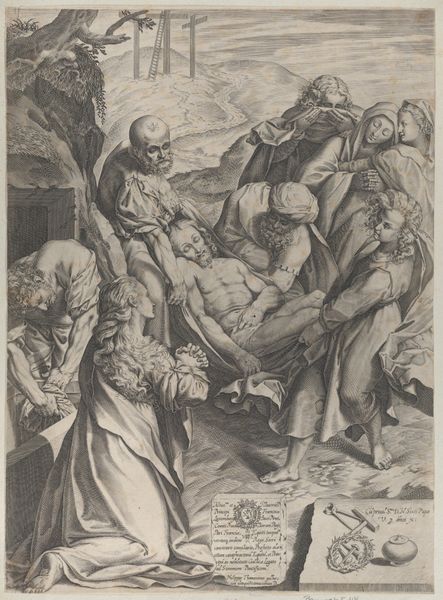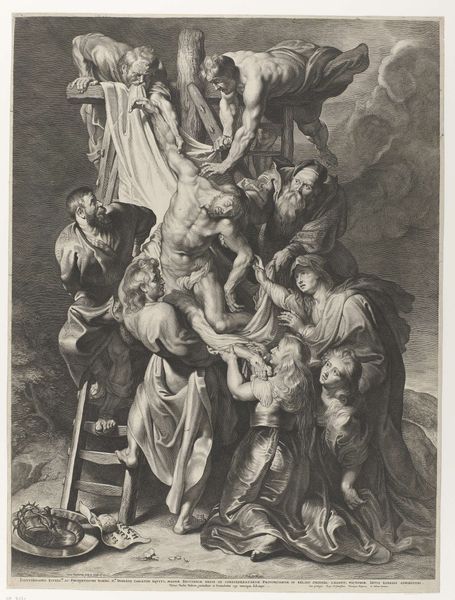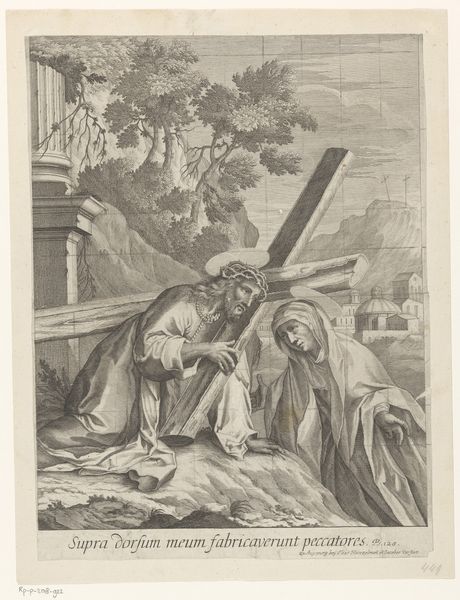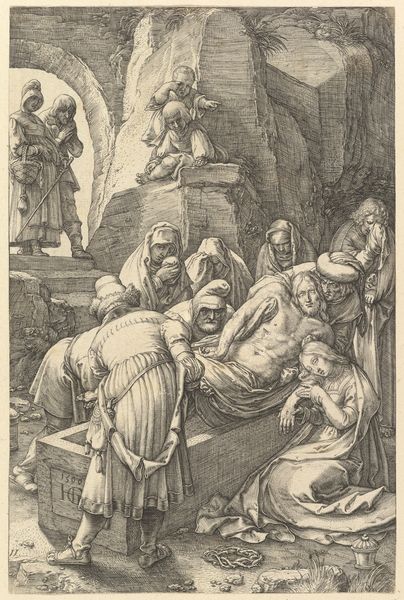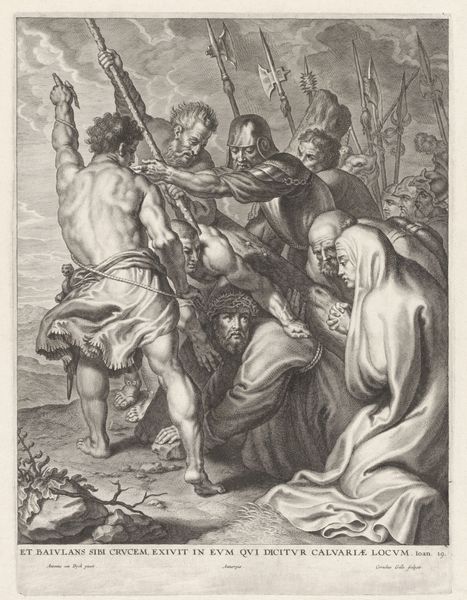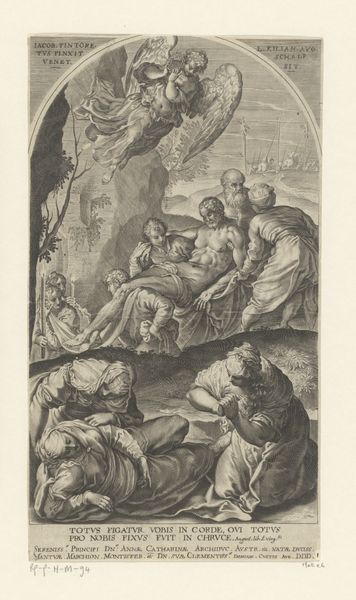
print, engraving
#
narrative-art
#
baroque
# print
#
old engraving style
#
figuration
#
history-painting
#
engraving
Dimensions: height 256 mm, width 188 mm
Copyright: Rijks Museum: Open Domain
Editor: Here we have "Kruisafname," or "Descent from the Cross," an engraving made sometime between 1591 and 1620 by Wolfgang Kilian. It's currently held in the Rijksmuseum. The detail achieved with this printmaking technique is stunning! I’m curious, looking at the way this image would have been produced and consumed, what catches your eye? Curator: The labor! Consider the process. First, someone, likely Kilian himself, meticulously carved this image into a metal plate. This wasn't some fleeting sketch; it demanded precision, time, and physical exertion. We need to consider the availability and cost of metal plates at the time, and who had access to them. Editor: Right! I was thinking about that too. You can see the different textures used to create shading...it’s incredible the amount of marks on the plate! Curator: Precisely. And think about its consumption. Prints democratized images, making religious scenes like this accessible beyond the wealthy who could commission paintings. It makes me consider the role of this image within the home. Was it purely devotional, or did its display also signal something about the owner's social standing and religious piety? What kind of labor was required by its patrons to obtain the engraving in the first place? Editor: That makes me think about how the print was distributed. Who was selling them? Curator: Exactly! And what about the paper? Its quality would affect the print's longevity and perceived value. The poem at the bottom too is key: someone set type, presumably in multiples. All that to say: "Kruisafname" reveals a complex network of materials, labor, and social practices far beyond just a devotional image. Editor: This reframes my thinking of prints entirely. I now want to dig into archives.
Comments
No comments
Be the first to comment and join the conversation on the ultimate creative platform.
